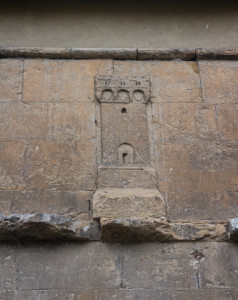A few days ago, a very kind and generous blog reader sent me the full study that I’d mentioned in my December 18 2015 post. Here are a few highlights…
First, I’d like to say that what I really like about these researchers, Golombick et al, is that they are looking for NONTOXIC ways to “develop early intervention strategies.” As you know, the conventional myeloma world is looking mostly at TOXIC early intervention strategies, which, as we know, can be very risky (just read my December 7 2014 post about the subpopulations of myeloma…).
Before I go on, this study is really a sort of “summary” that combines the data from previous studies carried out by these researchers on MGUS, SMM, and early-stage CLL patients. So we can actually access all the data on our own…
Since I’ve already posted about the MGUS and SMM patient studies (plus the one on a patient with laryngeal amyloidosis, which you can find by doing a search of my blog…), I wanted instead to focus a bit on a study carried out on early-stage CLL patients, a study published back in June but that I didn’t know about until this morning (it’s not myeloma-related, you see…). And the only reason I found out about it is because it’is discussed in our above-mentioned “summary” study. Here’s the link (to the CLL study): http://goo.gl/IPqo1n You can download and read the entire shebang for free…
Now for a bit of VERY interesting information: these CLL patients, 21 individuals with stage O/1 CLL (that is, early-stage chronic lymphocytic leukemia), took Meriva curcumin. Meriva, non C3 Complex curcumin…
Well, well. For the past three years or so, I’ve actually been curious to try Meriva, and back in 2012 I actually wrote a post about it. I should really test Meriva at some point…In fact, it makes sense to buy some while I’m in the U.S.A. for the holidays (we’re leaving day after tomorrow!). So now it’s on my list of things to buy…
You’re probably curious about dosage, since I was, too. You may find this incredible, but the dose administered to the CLL patients was just two grams a day. No kidding. Two grams…
And at that dose, a small percentage of these CLL patients had a more than 20% decrease in their absolute lymphocyte count, which is very good…this decrease occurred after just a few months in 4 patients out of 21. The rest of the patients didn’t respond to curcumin, apparently.
At least, they apparently had no response to this type of curcumin, and/or to this dosage (this last sentence is my own, by the way…just a thought I had while reading the study…). Hmmm, I wonder what would have happened if those CLL patients had taken a higher dose…just wondering…especially since I can’t even imagine going down to 2 grams a day…nope…no way!
Well, perhaps a dose increase might be an idea for a follow-up study…Anyway, this is an interesting study, and I know it’s not a myeloma-related one, but please go have a look, at least at the Results, Discussion, and Conclusion parts. There are a lot of details that I don’t have the time right now to post about…
Let’s get back to our MGUS, SMM, and CLL study now. It ends by suggesting that curcumin may be beneficial to some folks with MGUS, SMM, or early stage CLL, and that early intervention with curcumin “may lead to prolonged survival and delay in progressive disease in some of these patients.”
Plus, as we know, the obvious advantage of curcumin is that it is not toxic at all (unless you have gall bladder issues, so please do be careful about that!!!).
I agree with the conclusion reached by these researchers: we need larger studies. The problem is where to find the funding for these larger studies…same old, same old…uff.
In the meantime, I would like to send a message to Dr. Golombick publicly: THANK YOU, THANKYOUTHANKYOUTHANKYOU!, for your indefatigable work on behalf of blood cancer patients. 🙂
P.S. I might have asked this in a previous post, but does anybody here take Meriva? If so, with what results? And what dosage? Thanks! 🙂
 Stefano and I are leaving for the United States tomorrow morning…very early…zzzzzz.
Stefano and I are leaving for the United States tomorrow morning…very early…zzzzzz.






 Anyway, throughout the years, she and I have stayed in touch in many ways–phone messages, emails, phone calls–but we’d never actually met “in the flesh” until two days ago, which is when she, her husband and adult son made a stop in Florence on their way back home from Rome to Trieste, where they live. And so we met. Finally.
Anyway, throughout the years, she and I have stayed in touch in many ways–phone messages, emails, phone calls–but we’d never actually met “in the flesh” until two days ago, which is when she, her husband and adult son made a stop in Florence on their way back home from Rome to Trieste, where they live. And so we met. Finally.
 A couple of cute things happened while we were at the Piazzale. Number 1) While we were admiring the views, we suddenly heard a small group of friends whooping and clapping right next to us. Soon the entire Piazzale was clapping, jumping, and screeching with joy. Everyone stopped doing what they were doing–taking selfies, mostly. What had happened, you ask? Well, a young man had just proposed to his girlfriend. And this happened right next to us. Such a happy moment.
A couple of cute things happened while we were at the Piazzale. Number 1) While we were admiring the views, we suddenly heard a small group of friends whooping and clapping right next to us. Soon the entire Piazzale was clapping, jumping, and screeching with joy. Everyone stopped doing what they were doing–taking selfies, mostly. What had happened, you ask? Well, a young man had just proposed to his girlfriend. And this happened right next to us. Such a happy moment. 




 We had reserved afternoon tickets to visit the 15th century frescoes painted by Piero della Francesca inside the Basilica di San Francesco. Piero della Francesca was among the first early Renaissance painters to use
We had reserved afternoon tickets to visit the 15th century frescoes painted by Piero della Francesca inside the Basilica di San Francesco. Piero della Francesca was among the first early Renaissance painters to use 
